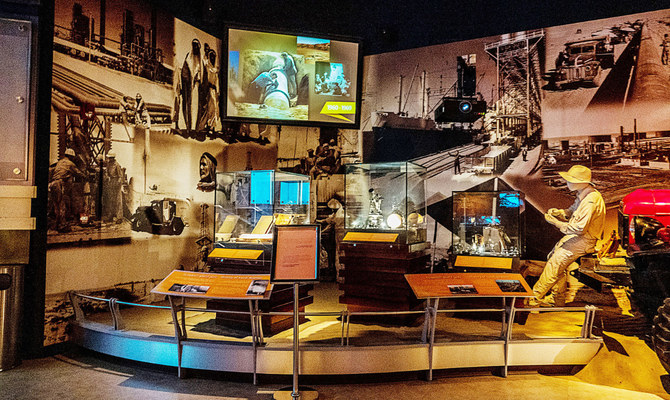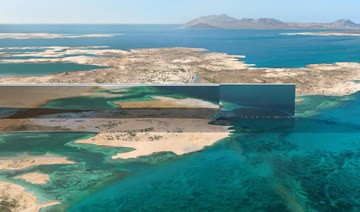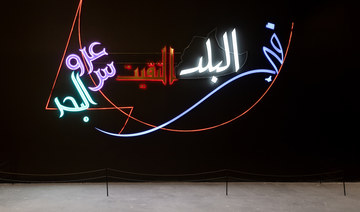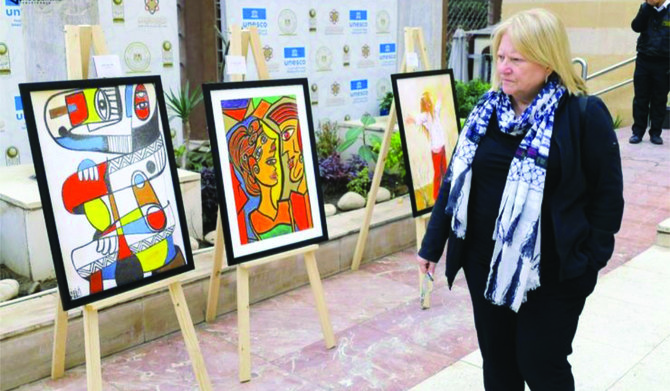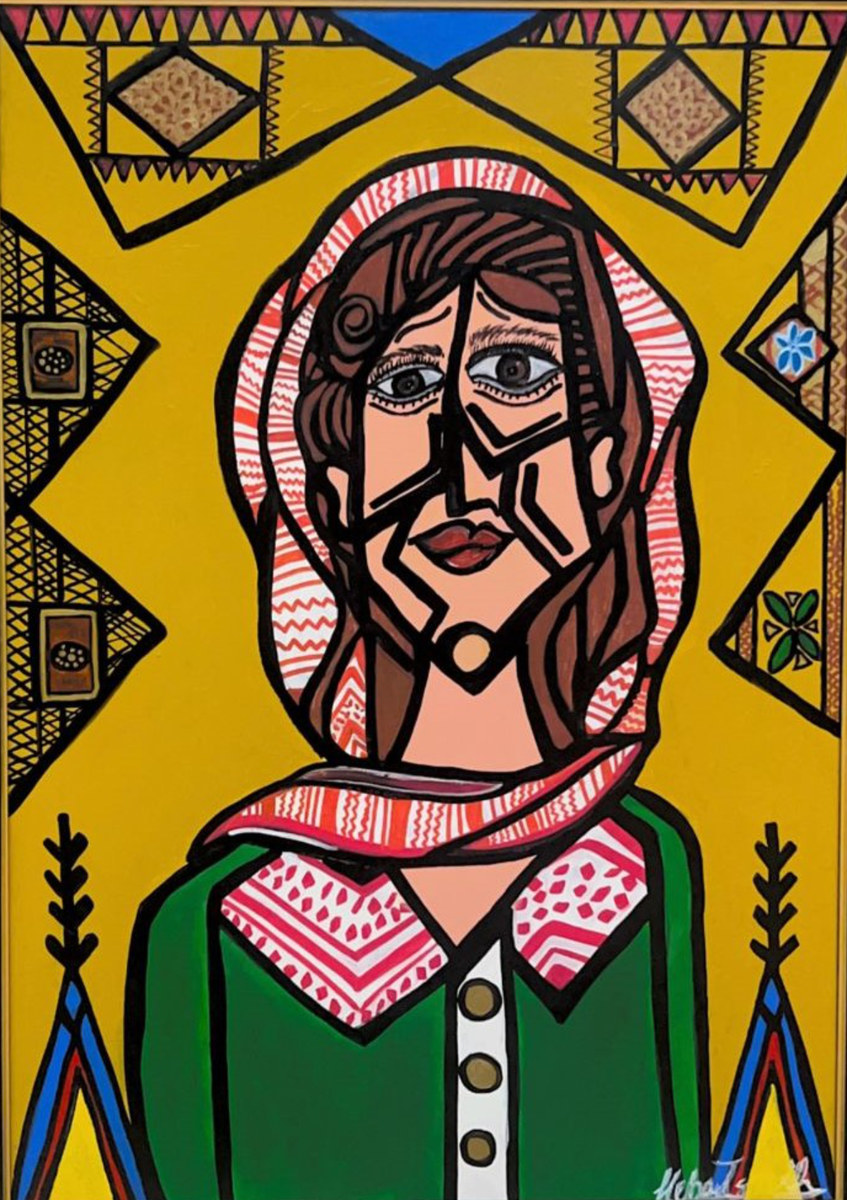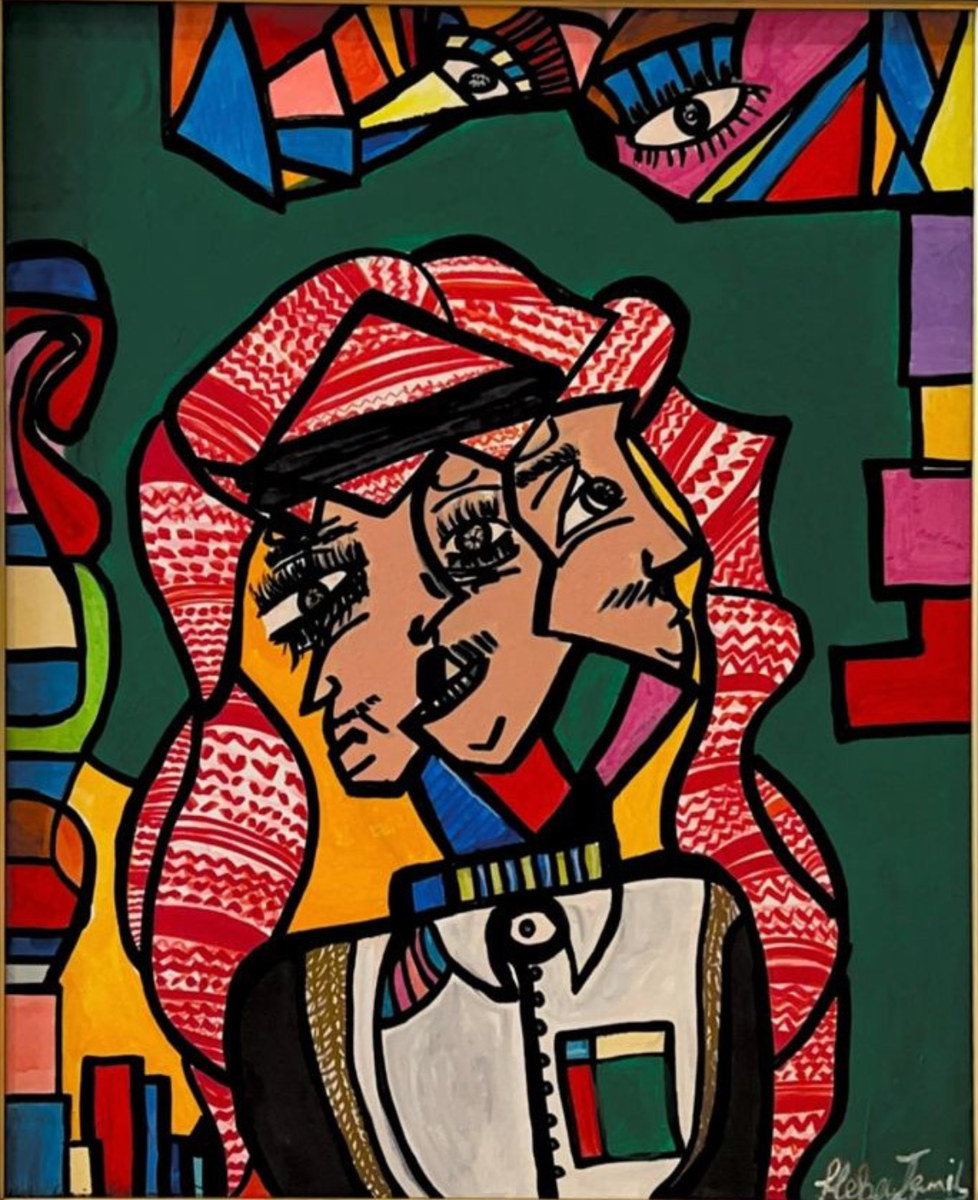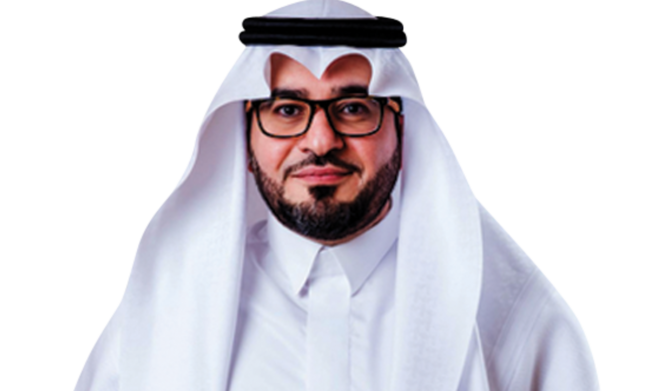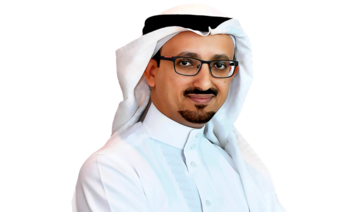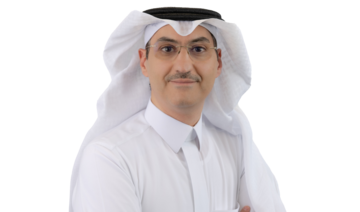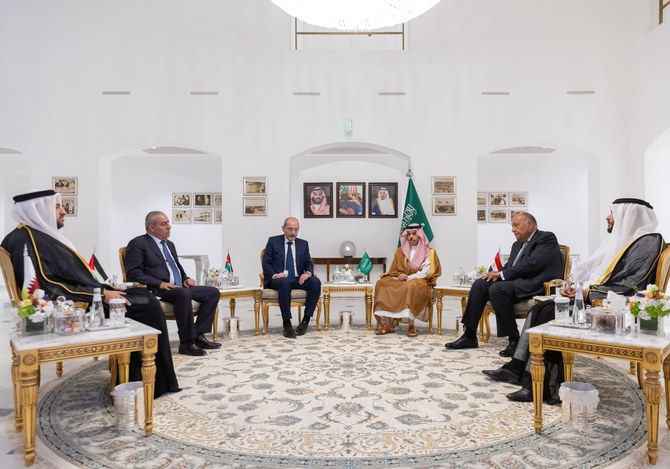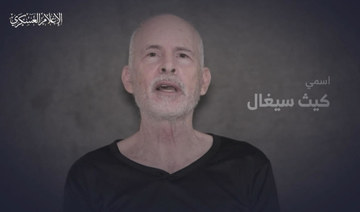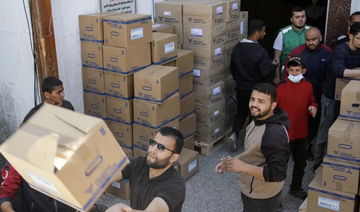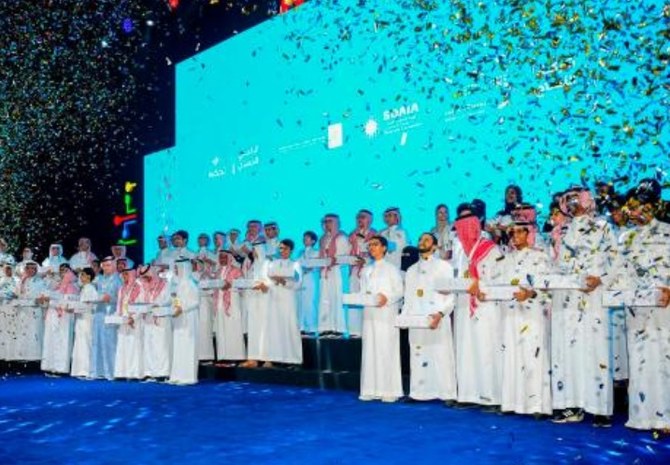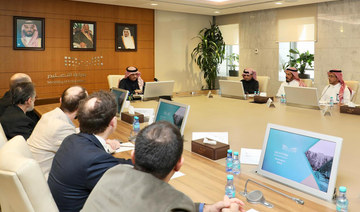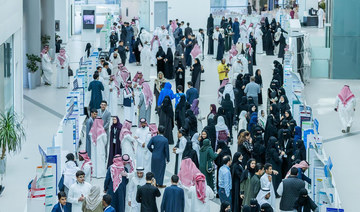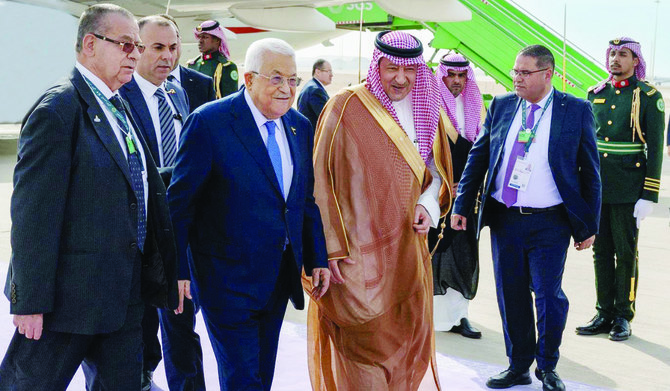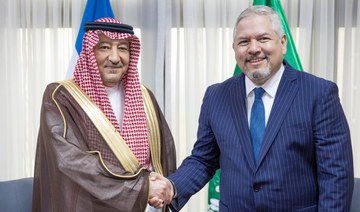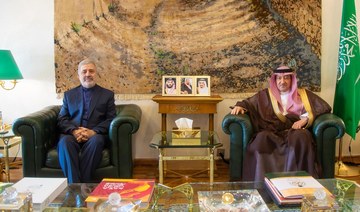DHAHRAN: Standing on the spot where the history of Saudi Arabia — and perhaps the entire world — shifted is a powerful experience.
A mere six years after the country was unified as a Kingdom in 1932, Dhahran struck black gold in its vast desert region. Now, the place where the Saudi oil industry first took off is honoring its history and legacy.
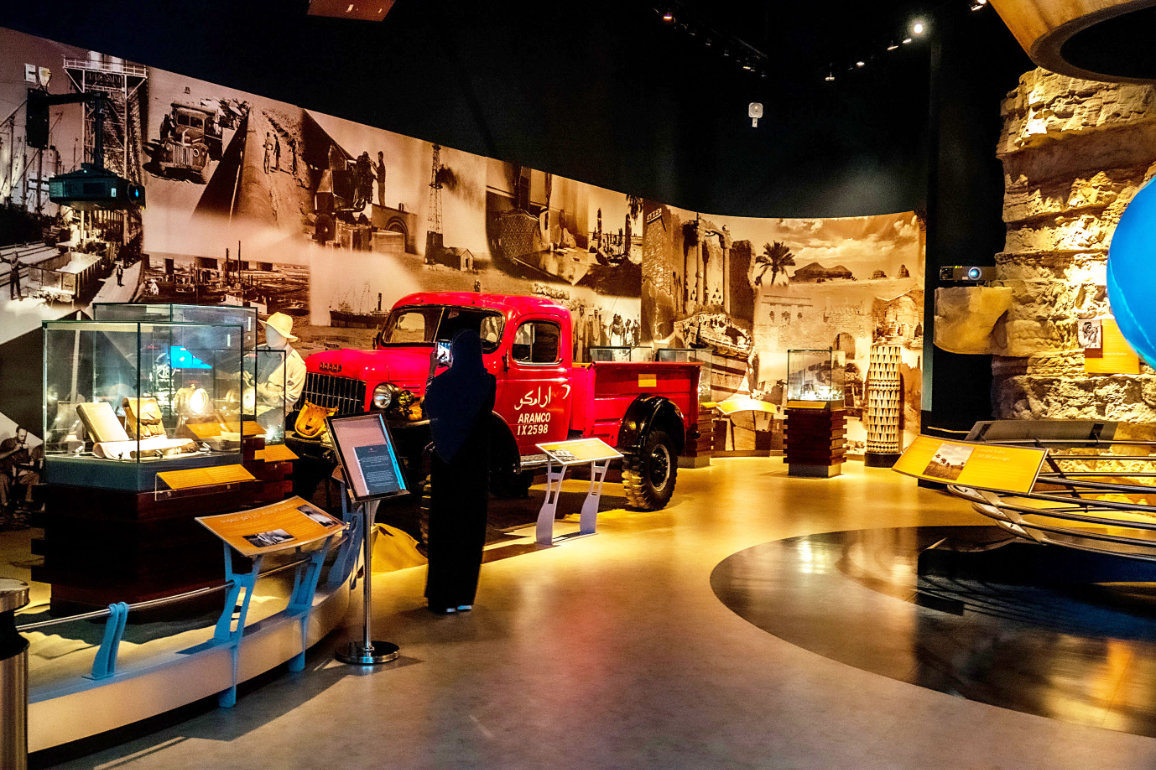
The exhibition is split into eight zones, each dedicated to an important component dealing with Saudi Aramco’s commitment to helping the world meet its energy needs in the most sustainable way. Interactive elements showcase how the company controls its vast operations, as well as its technological innovations. (AN photo by Huda Bashatah)
Lujain Abahussain, manager of the Energy Exhibit in Dhahran, grew up in the city, went to school just a short drive away, and still takes great pride in the historic site where her office stands.
“The fascination is in the location. We are located close to Well No. 7, the Prosperity Well, which is where petroleum was discovered in Saudi Arabia for the first time back in 1938. Right here, where we are located, is the Energy Exhibit, one of the first science centers in Saudi Arabia going back to the 1980s,” she told Arab News.
The exhibit, with its interactive displays, showcases the history of petroleum exploration, discovery and production — a journey of discovery that begins with the formation of oil in shallow oceans millions of years ago and continues up till the present day, highlighting the world’s energy questions.
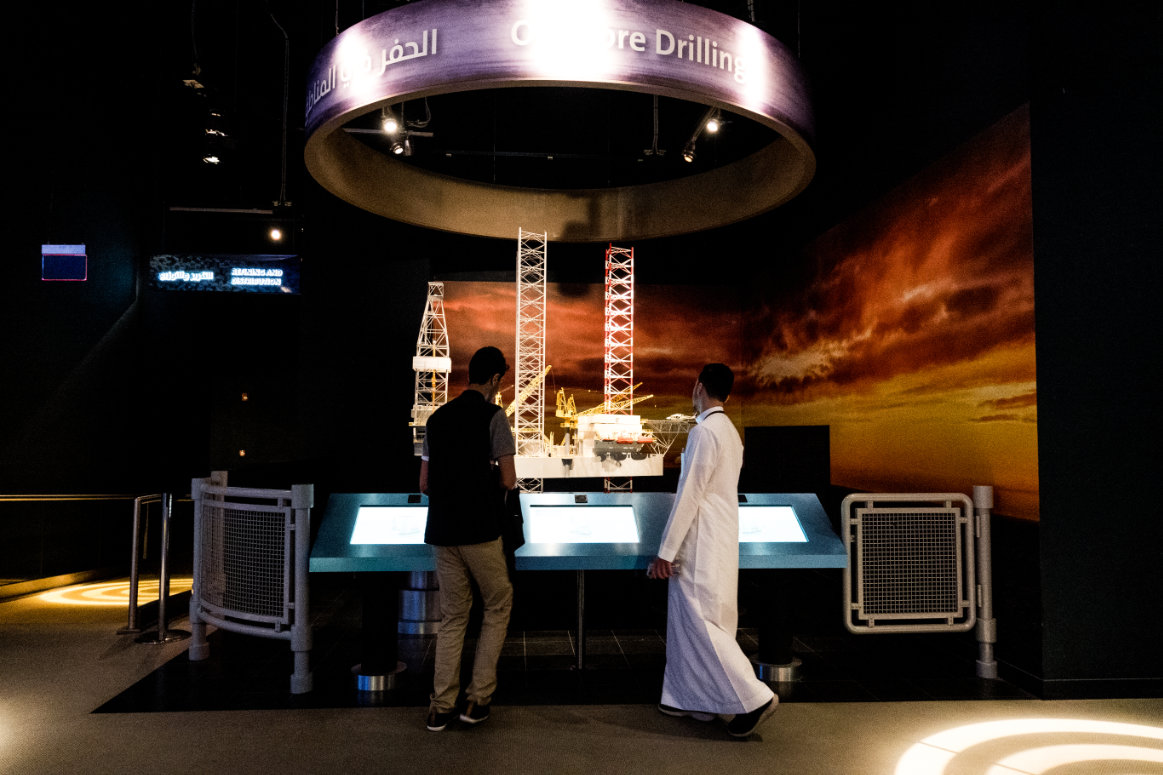
The exhibition is split into eight zones, each dedicated to an important component dealing with Saudi Aramco’s commitment to helping the world meet its energy needs in the most sustainable way. Interactive elements showcase how the company controls its vast operations, as well as its technological innovations. (AN photo by Huda Bashatah)
Those who grew up in Dhahran in the 1990s are likely to have vivid memories of visiting Saudi Aramco’s Oil Exhibit on a rare field trip off campus. It was revolutionary at the time — an innovative space where students were encouraged to touch, feel and carry out interactive “experiments.”
The reimagined Energy Exhibit standing today, with its multicolored glass door, is a reincarnation of the earlier Oil Exhibit.
Oil, the original inspiration for the earlier exhibit, was used by early Arabian societies for centuries before the development of drilling technology. The petroleum distillation process known today was developed by Jabir ibn Hayyan, whom many consider to be the father of Arab chemistry. An entire area of the current exhibit is dedicated to his work and discoveries.
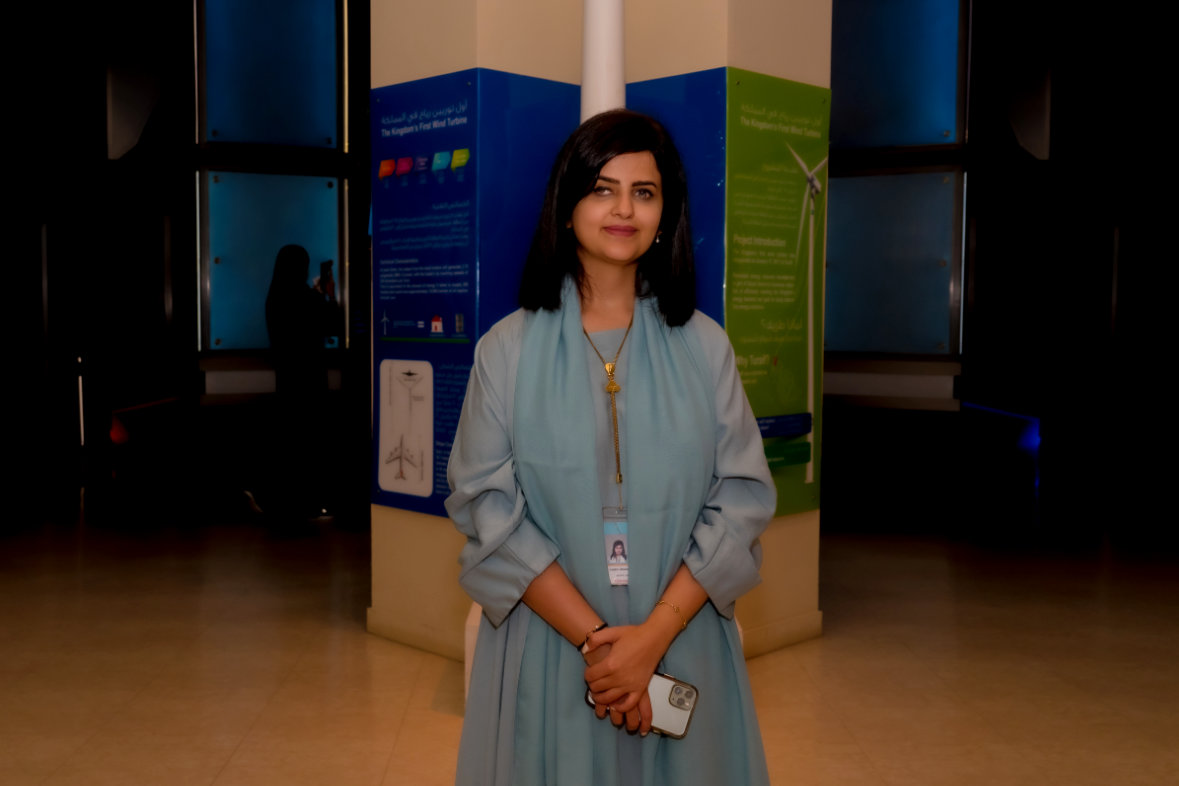
Making ‘facts fun’ is very much in line with the spirit of the exhibition and Lujain Abahussain’s mission. (AN photo by Huda Bashatah)
The Kingdom is rich in petroleum because of a distinct set of geological features and circumstances. Each rock layer tells a story about how oil was formed and what the Earth was like at that point.
The exhibit explains oil extraction from underground rock formations through desert and sea bed drilling operations, the refining process, the petrochemical industry and global distribution networks.
Specially designed displays are designed to inspire visitors to both conserve energy and adjust their lifestyles in order to safeguard the environment. They are also encouraged to find jobs, perhaps within Saudi Aramco, that will allow them to help their community and country.
Abahussain is proud that the exhibition, an invaluable asset to the city of Dhahran, remains free to all visitors because the aim is to promote the breadth of Saudi Aramco’s operations and innovation, ignite a sense of discovery, and provide a wealth of knowledge and a life-long learning platform to serve the community at no cost.
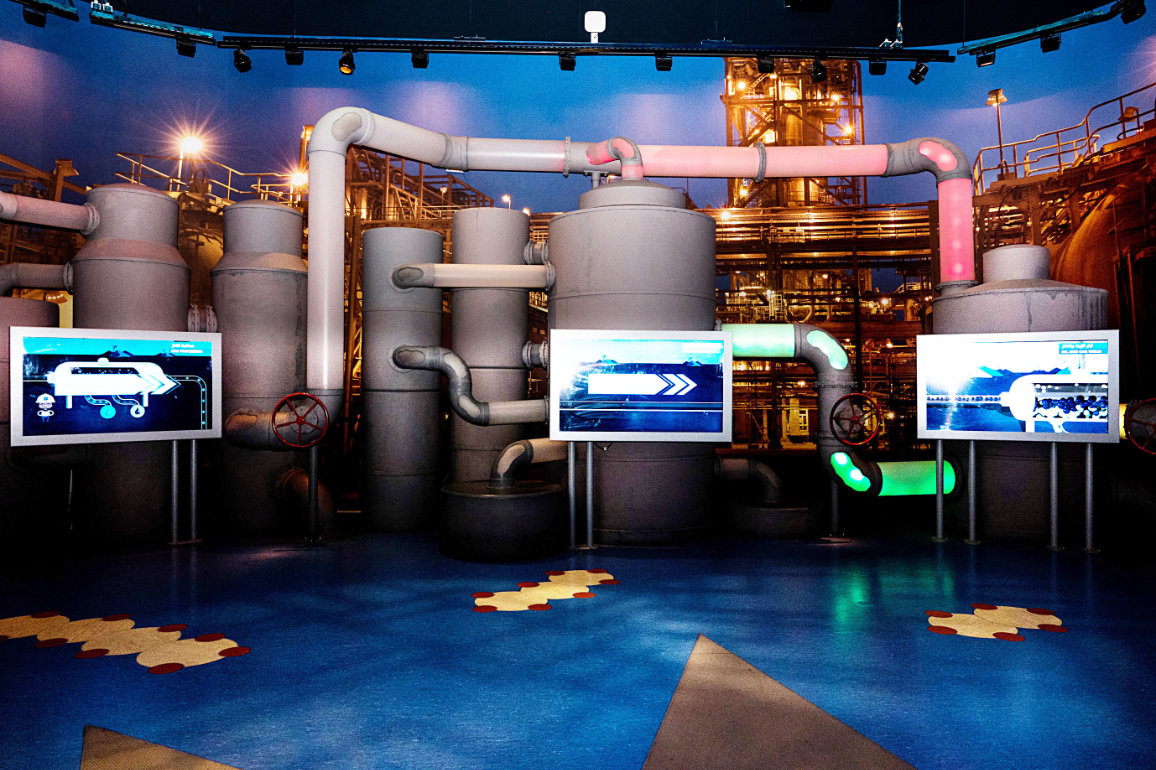
The exhibition is split into eight zones, each dedicated to an important component dealing with Saudi Aramco’s commitment to helping the world meet its energy needs in the most sustainable way. Interactive elements showcase how the company controls its vast operations, as well as its technological innovations. (AN photo by Huda Bashatah)
Making “facts fun” is very much in line with the spirit of the exhibition and her mission.
The Energy Exhibit hopes to spark interest among local teens in the Eastern Province, encouraging them to “carry the baton” into the future. It also hopes to showcase the multifaceted contribution of Saudi Aramco to the world’s energy needs.
Arguably the best job at the exhibit is that of Abdulrahamn Algharib, a “science communicator” who helps young visitors understand how magical science can be. He also develops programs to explore a range of science topics and communicate the information in interesting ways.
“The most exciting thing about my job is the challenges — or little quests,” Algharib told Arab News.
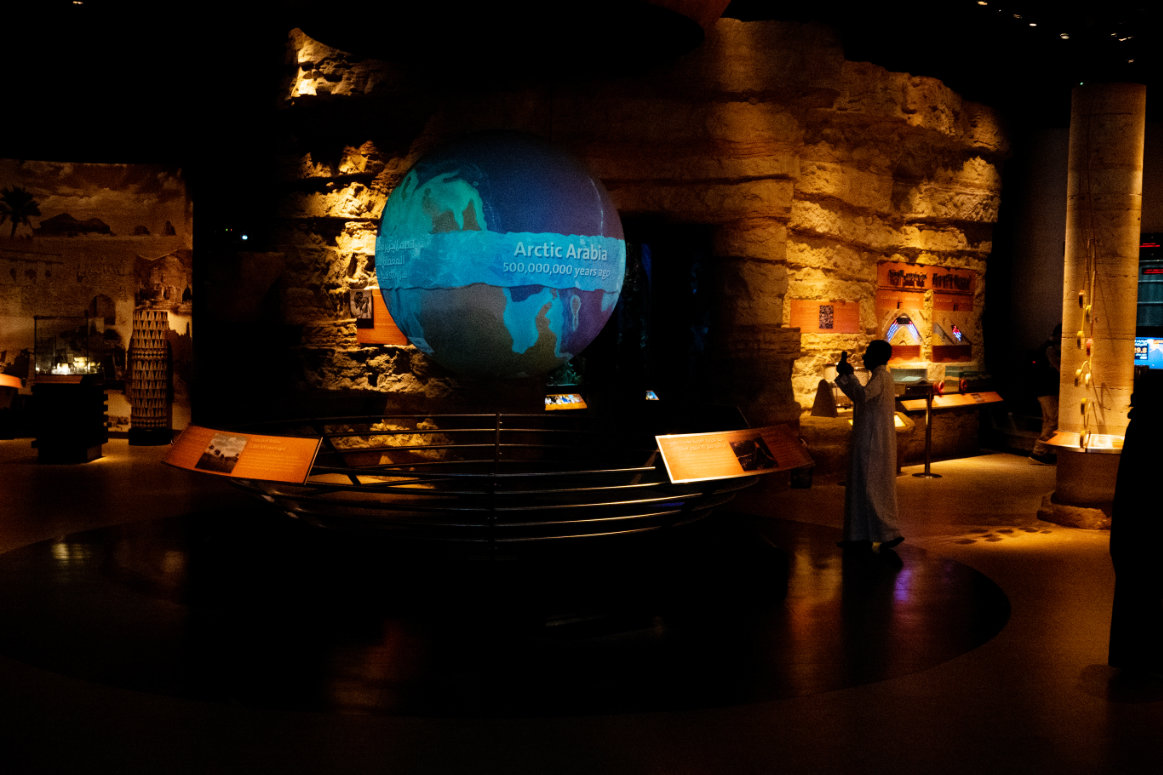
The exhibition is split into eight zones, each dedicated to an important component dealing with Saudi Aramco’s commitment to helping the world meet its energy needs in the most sustainable way. Interactive elements showcase how the company controls its vast operations, as well as its technological innovations. (AN photo by Huda Bashatah)
“We simplify something that people normally see as complicated. Now we are developing some programs regarding electricity in order to make it deliverable for the 9-to-12 age group. When I sit with the children, I start with questions, such as: ‘Can you see the lights on? How does it work? Does the wall give us the electricity or is it connected to something else?’ So they start thinking about it on a bigger scale. From that point, we take them to the next point.”
The exhibit’s hands-on approach and workshops are also in line with Saudi Arabia’s Vision 2030, in which alternative energy is a major focus.
The exhibition is split into eight zones, each dedicated to an important component dealing with Saudi Aramco’s commitment to helping the world meet its energy needs in the most sustainable way. Interactive elements showcase how the company controls its vast operations, as well as its technological innovations.
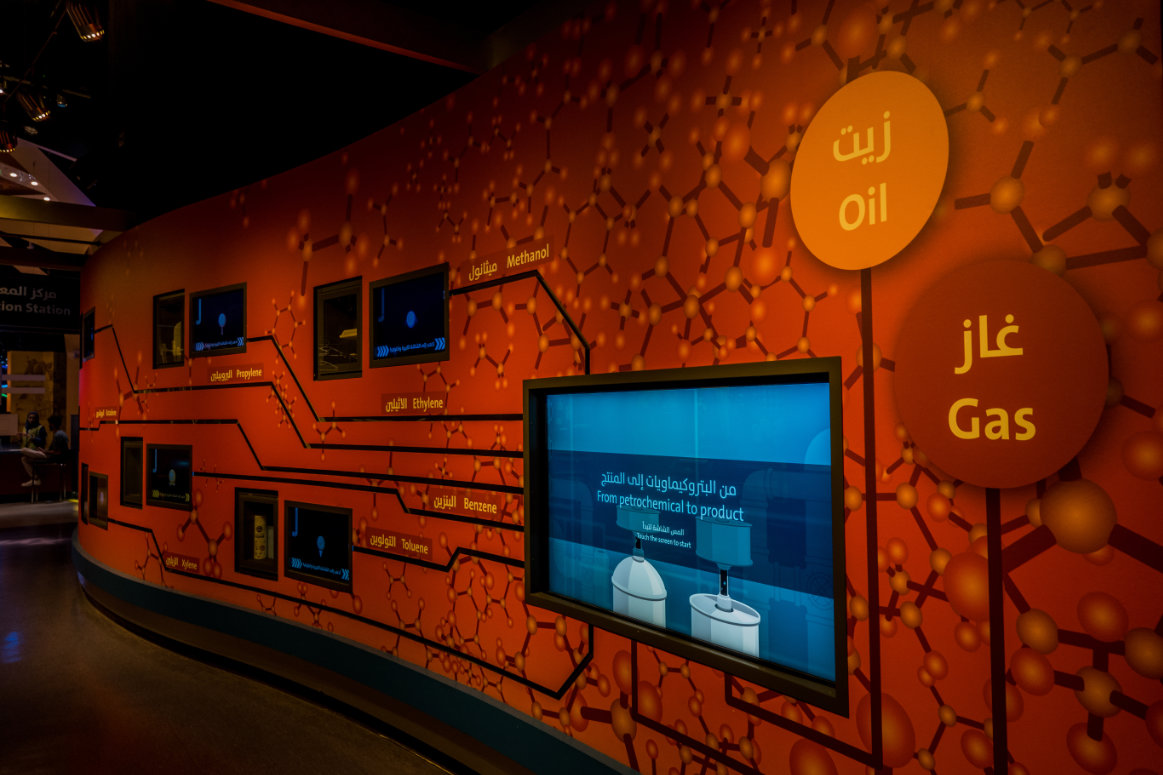
The exhibition is split into eight zones, each dedicated to an important component dealing with Saudi Aramco’s commitment to helping the world meet its energy needs in the most sustainable way. Interactive elements showcase how the company controls its vast operations, as well as its technological innovations. (AN photo by Huda Bashatah)
Most important, however, is the human creativity that continues to be the main fuel that keeps the company, the exhibit and the community going.
Today, the Kingdom — and the world — is facing a challenge meeting global energy needs while simultaneously protecting the planet.
With instructions in Arabic and English, the exhibit is accessible, inclusive and as informative as it is entertaining. Like Algharib, it starts with a simple question and encourages the visitor to go deeper.
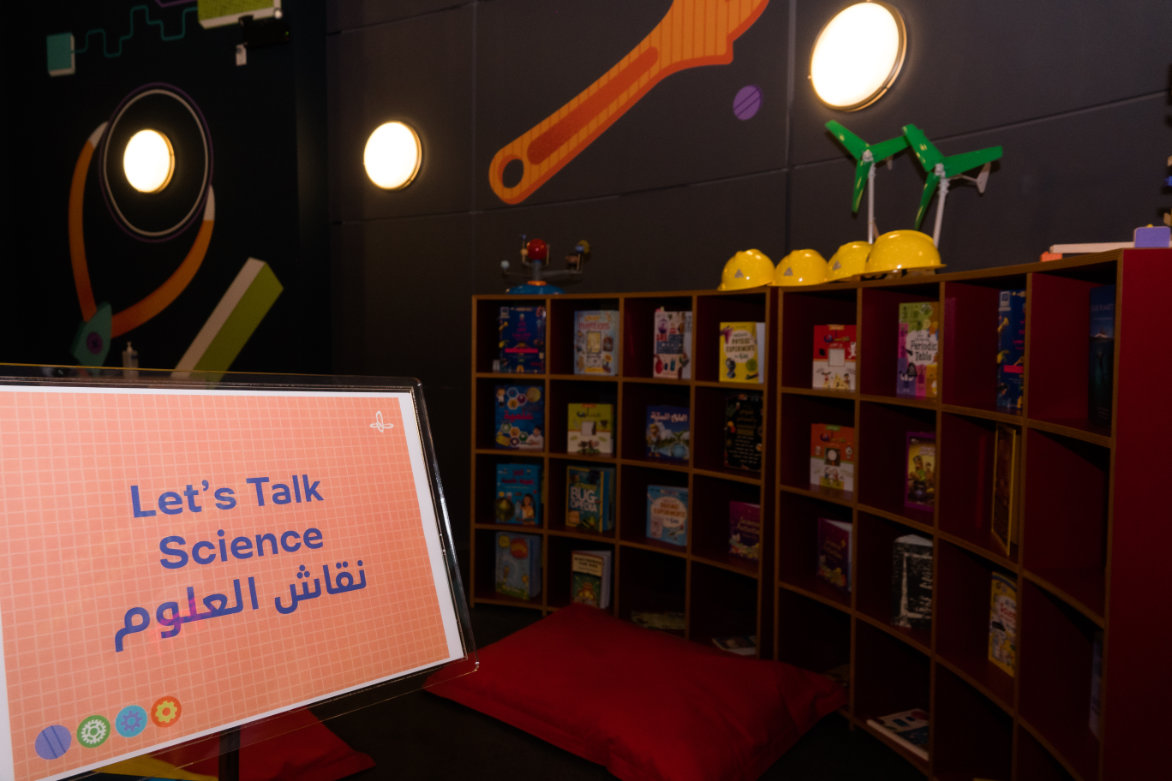
The exhibition is split into eight zones, each dedicated to an important component dealing with Saudi Aramco’s commitment to helping the world meet its energy needs in the most sustainable way. Interactive elements showcase how the company controls its vast operations, as well as its technological innovations. (AN photo by Huda Bashatah)
The main target audience is aged between 11-14, but the space is suitable for those 7 and older. It is also ideal for adults to play educational games.
“Our visitors tend to learn more when they have fun,” Abahussain said.
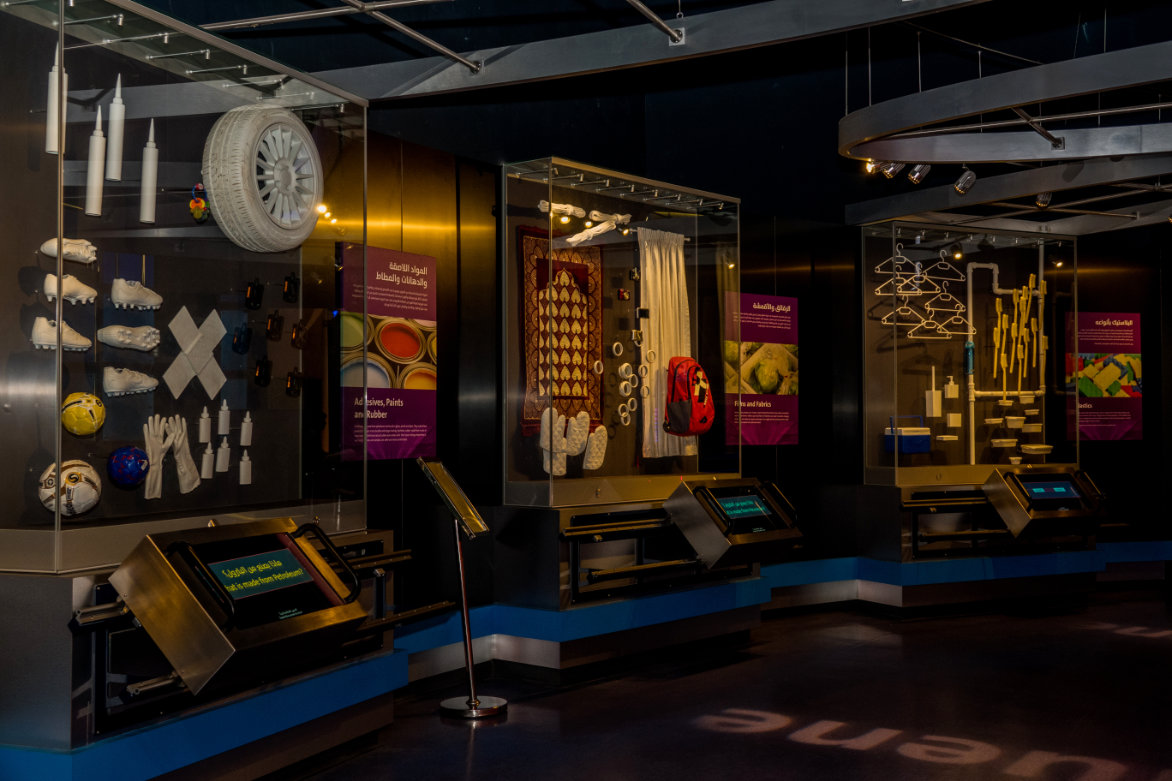
The exhibition is split into eight zones, each dedicated to an important component dealing with Saudi Aramco’s commitment to helping the world meet its energy needs in the most sustainable way. Interactive elements showcase how the company controls its vast operations, as well as its technological innovations. (AN photo by Huda Bashatah)
For more information, visit the Energy Exhibit on the web or find it adjacent to the Ithra building in Dhahran near the Saudi Aramco camp.



